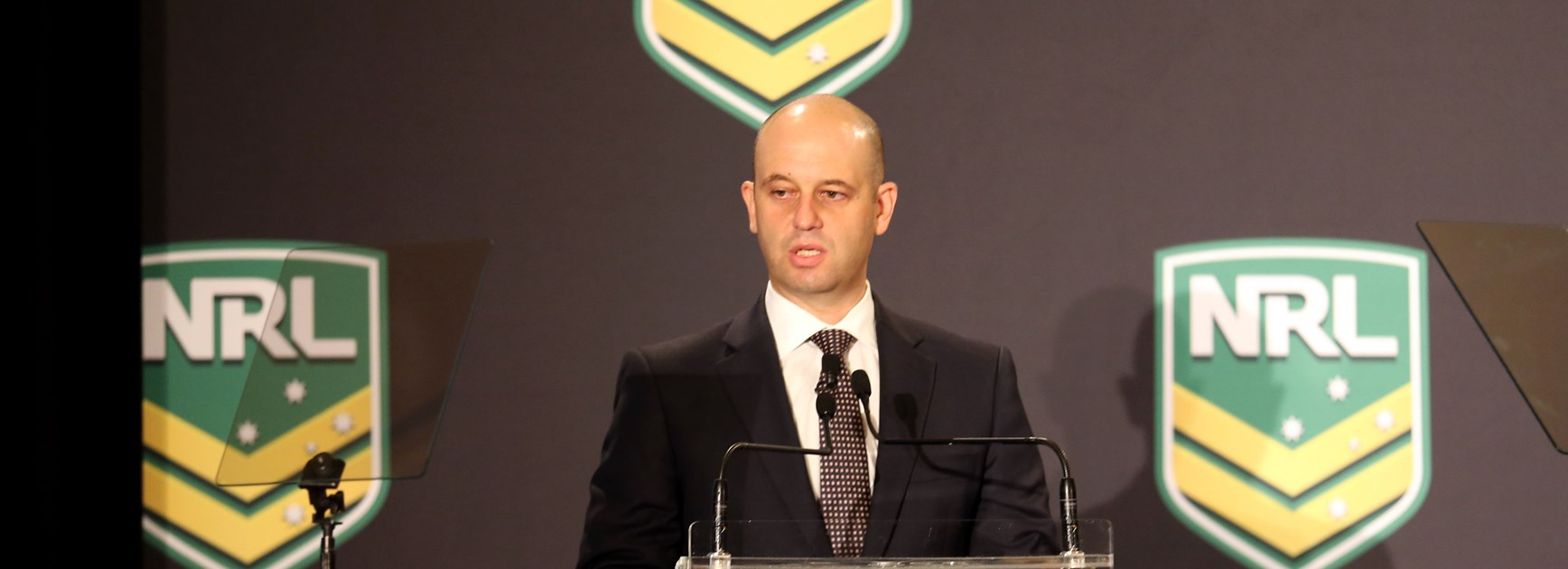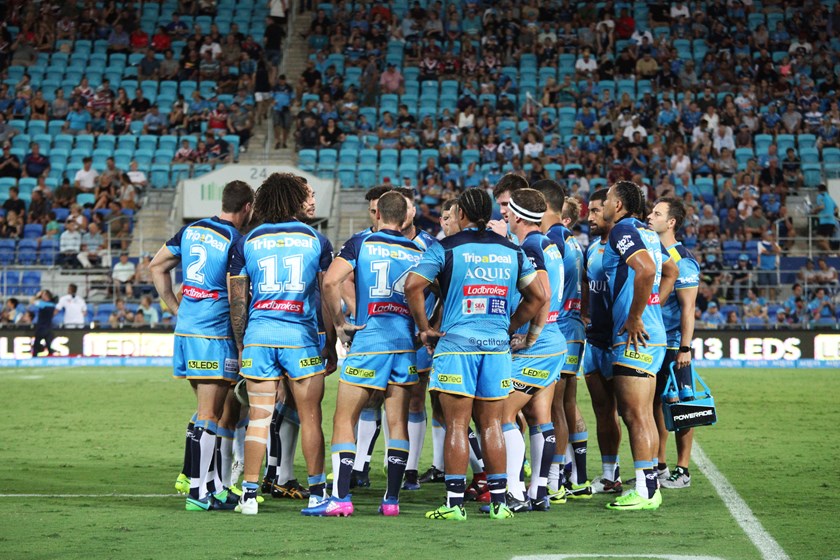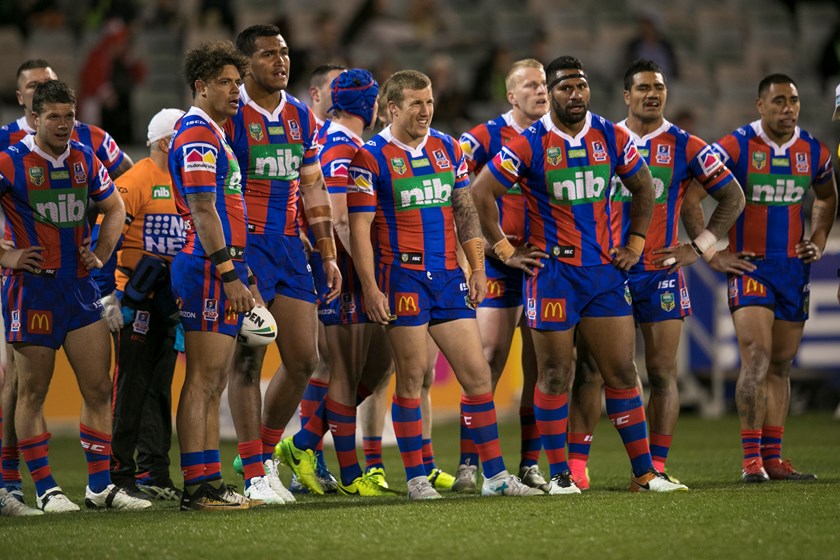
The NRL has announced it expects a $37.5 million surplus over the next five-year $1.8 billion broadcast cycle, but CEO Todd Greenberg has warned clubs the governing body is no longer in a position to bail them out should they struggle financially.
The NRL, which on Thursday confirmed a $3.7 million shortfall for 2017, will significantly boost club funding over the 2018-2022 period after protracted negotiations last year.
As a result of the increased funding to the clubs, the NRL is now no longer in a position to aid cash-stricken clubs like they have recently done with the Newcastle Knights and the Gold Coast Titans.
“It won’t happen, and the reason it won’t happen is because it can’t happen,” NRL chief executive Todd Greenberg said when asked about the potential of the governing body helping keep clubs afloat.
“Because we don’t have money put aside to prop a club up … If you look at the numbers, what the numbers tell you is that they’ve now got enough money to sustain themselves. So if they run smart, effective and efficient business models, we should have 16 strong clubs.
“But that’s now in the hands of clubs to run their businesses smartly with good people and good governance to turn them into good clubs. They’re now being funded from the centre better than ever before so they have their best shot.”
The NRL announced an average $10.5m surplus throughout each of the past five years in the 2013-2017 broadcast rights cycle. In the first two years there was a $66.1m surplus alone, however the past three years there has been a combined $14.4m shortfall.
The governing body originally budgeted for a $20m shortfall in 2017 alone, however a range of cost-cutting measures over the past 12 months meant that was limited to just $3.7m.
It was always expected the final years of the broadcast cycle would be in contrast with the opening couple of years, a pattern the code envisages continuing in the 2018-2022 cycle.
The NRL believes it will experience a $40m surplus in 2018. It is considerably less than the $45.3m surplus from the opening year (2013) of the last broadcast cycle despite a $700m increase in broadcast revenue this time around.
That is because of the large investment the NRL will make in providing clubs with increased funding to sustain and manage its own operation.
However, the NRL has set up a distressed clubs fund to help prop up teams on the brink of extinction.

That fund will be made up of a combined $3m each year split between all 16 clubs, and will be distributed equally back to the clubs at the end of the broadcast rights cycle should it remain untouched.
“So when we pay out to all the clubs, they’re going to pay back an amount each on an annual basis and it goes back into a fund,” Greenberg said.
“That’s their insurance fund, if you like. It’s a distressed club fund, so if one of them falls over, they can apply to that fund to help them. We won’t be helping them because we don’t have money in the centre to club the props up again. It will be a very different conversation next time around if a club gets into financial trouble. And that’s been well communicated.”
What is the expected NRL revenue in 2018?
“We’ll break a half a billion dollars in revenue this year. What that tells you is the game is heading in the right direction,” Greenberg said.
What is the estimated surplus in the next broadcast cycle?
The NRL has estimated an average $7.5 million surplus each year ($37.5 million combined). “We’re trying to plan for a small surplus every year, or to at least break even at the outer years,” Greenberg said.

What largely contributed to the $3.7 million shortfall in 2017 compared to the $2.6 million shortfall in 2016?
The major factor was an additional $2.7 million spent on clubs, states and development compared to the corresponding period 12 months prior.
How has the non-broadcast revenue tracked over the past broadcast rights cycle?
It has increased from $99 million in 2013 to $147.9 million in 2017. Greenberg said it is expected next season the NRL will surpass the $150 million mark for the first time in the game’s history.
What financial position is the NRL in as it approaches a new broadcast cycle?
“When I hear certain headlines and media commentary about the game is broke, it couldn’t be further from the truth.”
How much does the game invest in its football operations?
The NRL spent $20.1 million in 2017. That has increased significantly from 2013 ($9.6 million). It has spiked significantly over the past couple of years as a result of the investment in the bunker, concussion protocols, statistics and referees.
How much does the game spend on the integrity unit and salary cap auditing?
In 2012 only two salary cap auditors comprised of the $500,000 investment in the game’s integrity. That has increased to $3.7 million in 2017. The integrity unit now comprises of 17 staff members.


